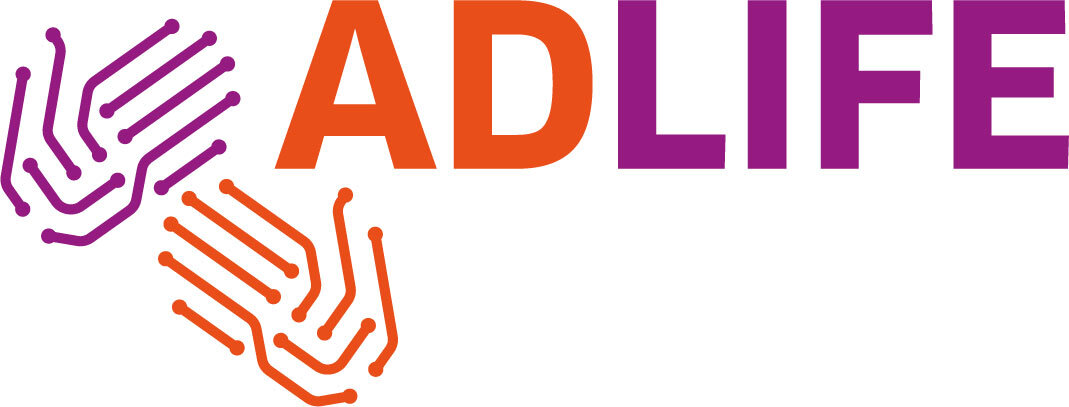Implementing Decision Aids in ADLIFE Architecture
As introduced in our previous blog, shared decision-making is an ‘approach where clinicians and patients share the best available evidence when faced with the task of making decisions, and where patients are supported to consider options, to achieve informed preferences’.
What are Decision Aids?
Decision aids are tools designed to facilitate shared decision making to help people participate in decision making about health care options [1]. Decision aids inform patients about available treatment options, by presenting potential benefits, risks and outcomes. They are designed not just to inform patients, but to help them think about what the different options might mean for them and to reach an informed preference [2].
Patient decision aids can be made available via different forms, sometimes as simple one-page sheets outlining the choices, sometimes via more interactive web sites which also includes supporting videos. On the other hand, a typical decision aid has the following main components supporting the key elements of Shared Decision Making:
- Setting out the facts about the condition and symptoms
- Presenting the possible options by discussing the harms, benefits and outcome probabilities
- Helping patients to clarify their personal preferences
- Making the decision
How do we utilize Decision Aids in ADLIFE?
In ADLIFE Project, we aim to employ decision aids as a means where clinicians and patients work together to select possible treatment options to be added to the care plan, based on clinical evidence and the patient’s informed preferences.
In the following text, we present a snippet from an ADLIFE Storyboard where use of decision aids is exemplified:
Svea is a 65-year old woman suffering from moderate COPD (GOLD 3). Together with her GP, they have decided to use ADLIFE tools to collaboratively manage her care plan.
Svea's doctor connects to a secure video call room and invites Svea to review her care plan. They see both each others and Svea's care plan.
The doctor points out that physical activity is very important for Svea. They agree to increase the goal regarding physical activity, as Svea sometimes feels breathless during walks and would like to maintain her fitness. The doctor cancels the previous activity ("physical activity two days a week") and shows three suggestions on new activities ("walk a certain distance each day", "walk a certain amount of time each day" or "walk a certain number of steps each day"). They reason, select one and add it as a new personal activity. Svea clicks “approve” to show that she has been involved in the decision.
Example 1 from ‘Region Jämtland Härjedalen’ Story Board
How do we integrate Decision Aids to ADLIFE Tools?
ADLIFE has two main components to support the collaborative management of a patient’s care plan:
Personalized Care Plan Management Platform (PCPMP), to be used by clinicians to design the care plan of the patient via adding treatment activities based on evidence-based guideline recommendations
Patient Empowerment Platform (PEP), to be used by patients and their informal care givers, to review care plan activities, educational materials and also provide feedback and patient recorded symptoms and observations
In ADLIFE we aim to integrate decision aids to both of these platforms to enable shared decision making as follows:
Option 1: While the care plan is being reviewed during face-to-face or remote encounters, decision aids can be proposed to the clinicians as a possible tool to select suitable treatment options, instead of directly selecting and adding an activity to the care plan. Clinicians and patients can walk through the Decision Aid components together. At the final decision step, clinicians can assign this as an activity to the patient, and decision aid becomes available in PEP. During the visit, patients can select one of the options via PEP. The patient’s decision is also noted at PEP, and the selected treatment activity is added to the care plan.
Option 2: Similar to the first option, while the care plan is being reviewed during a face-to-face or remote encounter, clinicians can briefly introduce the treatment options and assign a decision aid to the patient. Patients, then can review and absorb the decision aid carefully at home. Patients can review the reference material at their own pace, deliberately assess pros and cons of alternative treatment options, and can also discuss the options with family members if needed. When s/he feels ready, patient can select among the options via PEP. The choice is informed to the clinician via PCPMP, where s/he can update the care plan accordingly. At this point, clinicians are also enabled to organize a follow-up encounter with the patient to discuss the decision of the patient and update the care plan accordingly.
Option 3: Similar to the second option, but this time, after introducing the treatment options to the patient, the clinician adds the decision aid to the care plan, and assign this activity to both the patient and another healthcare professional who can act as a Health Coach. Later this Health Coach, which could be a Nurse for example, can call (via a videocall over PCPMP and PEP or via phone) to walk through the decision aid together with the patient by actively listening, raising open and closed questions, and supporting the patient for deliberation. When the patient selects among the options via PEP, the choice is informed to the clinician via PCPMP, where s/he can update the care plan accordingly.
Written by Gokce Banu Laleci Erturkmen, PhD.
R&D Director, SRDC.
References
[1] IPDAS Collaboration. What are patient decision aids? (2017). http://ipdas.ohri.ca/what.html.
[2] Coulter, Angela & Collins, A.. (2011). Making Shared Decision Making a Reality, https://www.kingsfund.org.uk/sites/default/files/Making-shared-decision-making-a-reality-paper-Angela-Coulter-Alf-Collins-July-2011_0.pdf
Related posts





